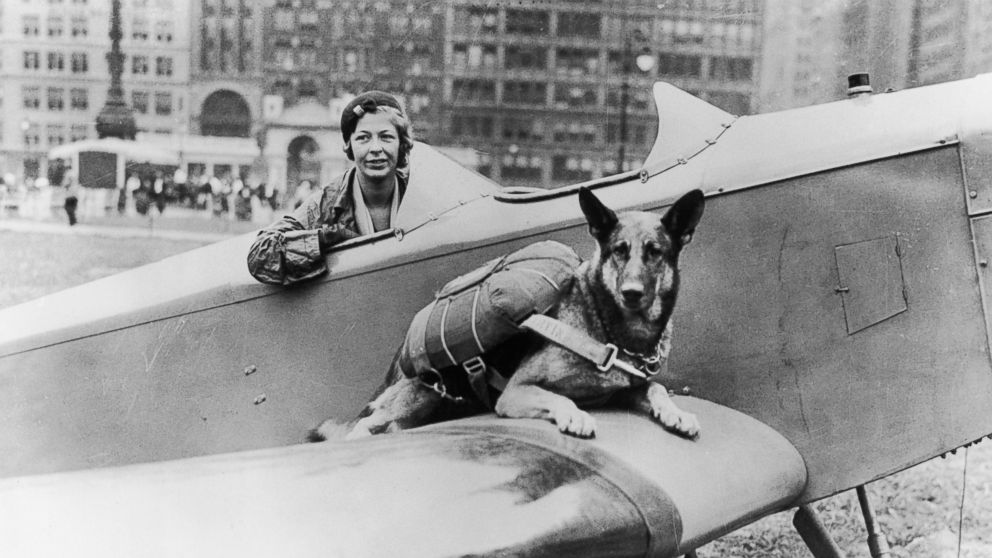Britain's Luftwoofe: The Heroic Paradogs of World War II
Britain's 13th Parachute Battalion developed a new weapon: parachuting dogs.

Dec. 28, 2013 — -- Brian was a tough paratrooper. He trained hard for his deployment with the British Army during . During his training, he learned how to identify minefields. Then, on the battlefield, he protected his comrades-in-arms -- though not all of them made it back. On D-Day, he parachuted under heavy anti-aircraft fire onto the Continent. He was there when the Allies liberated Normandy. A few months before the war's end, he parachuted into western Germany, from where he marched to the Baltic Sea.
Less than two years after the war, Brian was given an award to recognize his "conspicuous gallantry." But the bronze medal was not the only thing that distinguished this special soldier from the majority of his comrades: Brian, the tough paratrooper, was a dog, a young Alsatian-Collie mix.
During World War II, the 13th (Lancashire) Parachute Battalion started an adventurous experiment as it prepared for D-Day: enlisting dogs into their ranks. The so-called "paradogs" (short for "parachuting dogs") were specifically trained to perform tasks such as locating mines, keeping watch and warning about enemies. As a side job, they also served as something of a mascot for the two-legged troops.
Finding Heroes among Orphans
Andrew Woolhouse, an amateur historian, surmises that the battalion first got the dog in early 1944 because Lance Cpl. Ken Bailey "had a veterinary background." Woolhouse researched the battalion for five years and gathered the writings of a number of battalion members from both before and after D-Day to help him write a battalion history, "13 - Lucky for Some: The History of the 13th (Lancashire) Parachute Battalion," published this year.
At the time, Bailey had been assigned to run the "War Dog Training School" in Hertfordshire. In 1941, the British War Office had made radio appeals for dog-owners to lend their pets to the war effort. This led to the first batch of animals at the training school -- though the sheer number of people trying to get rid of their dogs during the war soon made it somewhat of a shelter.
Among these animals was the 2-year-old dog Brian. In Jan. 1944, Bailey wrote in his notebook: "One of the dogs selected from the training school in Hertfordshire was 'Bing' a 2 year old Alsatian-Collie cross. Bing had been called Brian by his civilian owner, Betty Fetch, and was the smallest of his litter and due to wartime rationing he was given up."
In addition to Brian, now called Bing, Bailey took two other dogs into training: Monty and Ranee, both Alsatians (also known as German shepherds). These three would number among Britain's paradogs during the war, with Ranee being the only female parachuting dog in the war.
Training with Treats
Training began with getting the dogs used to loud noises. At the base in Larkhill Garrison, the dog handlers had the dogs sit for hours on transport aircraft with their propellers spinning. They also trained the dogs to identify the smell of explosives and gunpowder in addition to familiarizing them with possible battlefield scenarios, such as what to do if their master was captured, how to track down enemy soldiers and how to behave during firefights.
Training on the ground lasted roughly two months. But then the dogs started what wasn't part of the training of the other search dogs in the war: parachuting maneuvers.




